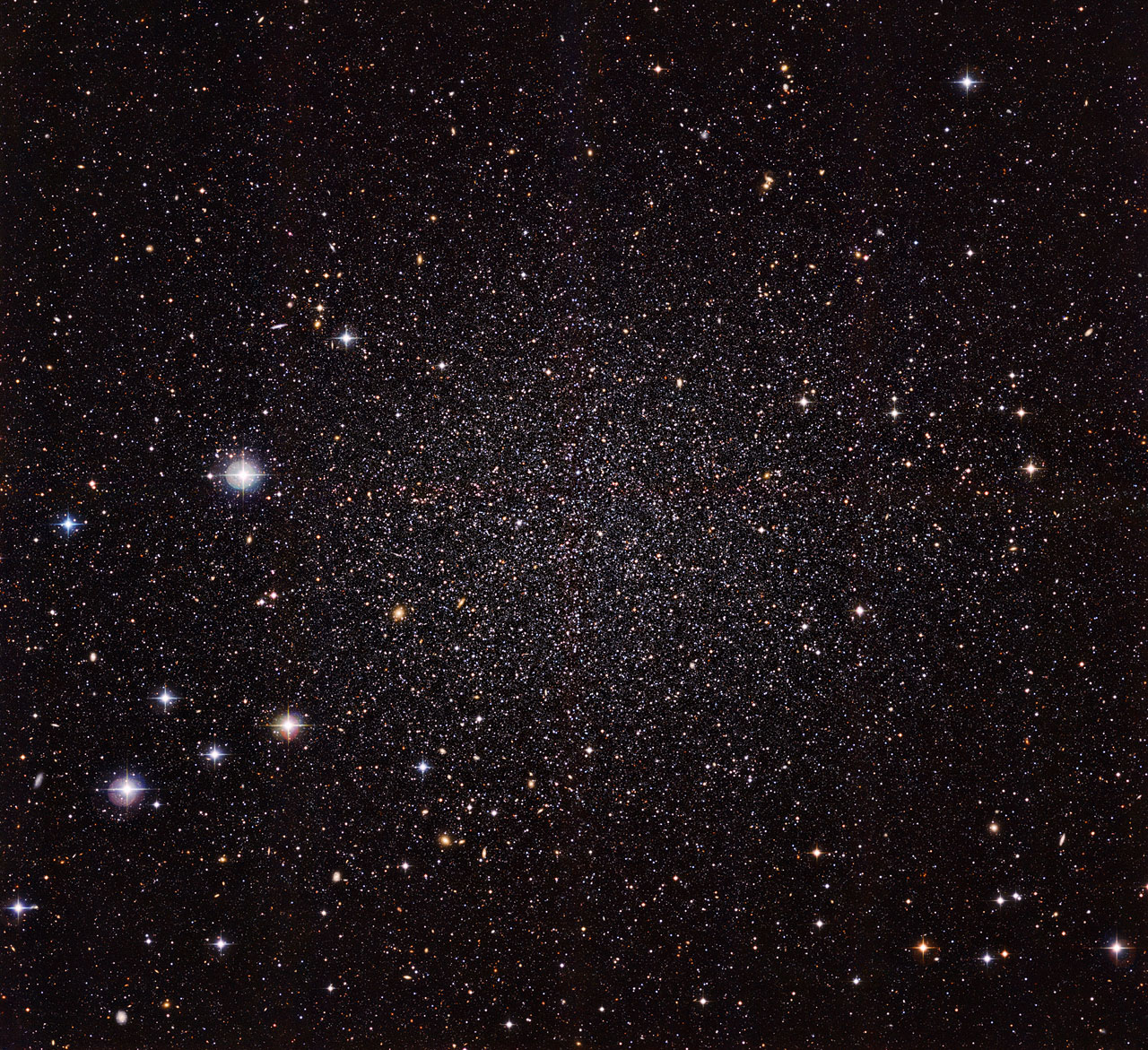Milky Way's Shy Dwarf Galaxy Neighbor Revealed in New View (Video)

Smaller and older than the Milky Way, and very close by, the Sculptor Dwarf Galaxy is lurking right in plain sight, easy to miss. But studying the faint satellite galaxy is revealing more about how groups of stars form and evolve.
Today (Sept. 16), the European Southern Observatory released a new image of the Sculptor Dwarf Galaxy, located 280,000 light-years from Earth. Taken at the La Silla Observatory, in Chile, the image shows the ghostly galaxy's faint spread across the southern sky in the Sculptor constellation.
The galaxy is one of 14 satellite galaxies orbiting the Milky Way, which astronomers suspect are similar to the galactic building blocks that came together to form the Milky Way in the first place. It hosts a population of ancient stars, visible in the image, that help astronomers delve into the galaxies' early history. [Video: Zoom in on the Shy Dwarf Sculptor Galaxy]
Spheroidal dwarf galaxies like the Sculptor Dwarf have also been studied deeply to better understand dark matter — they are thought to have the most dark matter of any galaxy because of the discrepancy between the galaxy's overall mass and the much smaller mass of the stars it contains.
The Sculptor Dwarf Galaxy was one of the first of the small galaxies orbiting the Milky Way to be discovered, and even then it took until 1937 to identify because of its faintness. More recently, astronomers created "the most accurate star formation history ever determined for a dwarf spheroidal galaxy," ESO officials said in a statement.
As researchers investigated the galaxy's stars, they found that many of them carry few heavy- chemical elements — a sign that the stars were born in an early generation, rather than from the remains of other earlier stars that would be more likely to contain such elements. The galaxy also contains a small population of newer stars, with many heavy elements, crowded toward the galaxy core. The average age of stars in the galaxy is old, so it offers a good opportunity to study early-star formation.
"The stars within dwarf galaxies like the Sculptor Dwarf Galaxy can exhibit complex star formation histories," ESO officials said. But because they've remained isolated, they each have their own story to tell.
Get the Space.com Newsletter
Breaking space news, the latest updates on rocket launches, skywatching events and more!
"Studying the similarities in dwarf galaxies' histories, and explaining the occasional outliers," the ESO statement said, "will help to explain the development of all galaxies, from the most unassuming dwarf to the grandest spirals."
Email Sarah Lewin at slewin@space.com or follow her @SarahExplains. Follow us @Spacedotcom, Facebook and Google+. Original article on Space.com.
Join our Space Forums to keep talking space on the latest missions, night sky and more! And if you have a news tip, correction or comment, let us know at: community@space.com.

Sarah Lewin started writing for Space.com in June of 2015 as a Staff Writer and became Associate Editor in 2019 . Her work has been featured by Scientific American, IEEE Spectrum, Quanta Magazine, Wired, The Scientist, Science Friday and WGBH's Inside NOVA. Sarah has an MA from NYU's Science, Health and Environmental Reporting Program and an AB in mathematics from Brown University. When not writing, reading or thinking about space, Sarah enjoys musical theatre and mathematical papercraft. She is currently Assistant News Editor at Scientific American. You can follow her on Twitter @SarahExplains.









